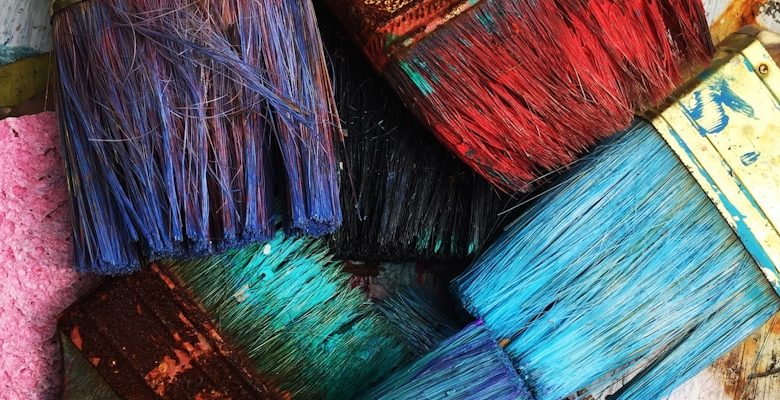How Blockchain is Influencing the Art Market Through NFTs

- Understanding the basics of blockchain technology
- The rise of NFTs and their impact on the art market
- Exploring the benefits of using blockchain for art authentication
- Challenges and criticisms of NFTs in the art world
- How artists are leveraging blockchain to reach a global audience
- The future of art ownership in the digital age
Understanding the basics of blockchain technology
Blockchain technology is the foundation on which NFTs operate in the art market. A blockchain is a decentralized, distributed ledger that records transactions across a network of computers. Each transaction is grouped into a “block” and linked together in chronological order, creating a chain of blocks – hence the name blockchain.
One of the key features of blockchain technology is its immutability. Once a block is added to the chain, it cannot be altered or deleted without the consensus of the network. This ensures the integrity and security of the data stored on the blockchain, making it an ideal solution for recording ownership and provenance in the art market.
Another important aspect of blockchain technology is its transparency. All transactions on a blockchain are visible to all participants in the network, providing a high level of accountability and trust. This transparency is crucial in the art market, where provenance and authenticity are of paramount importance.
Blockchain technology also enables smart contracts, which are self-executing contracts with the terms of the agreement directly written into code. Smart contracts can automate the sale and transfer of digital assets, such as NFTs, eliminating the need for intermediaries and reducing the risk of fraud.
In conclusion, understanding the basics of blockchain technology is essential to grasp how NFTs are revolutionizing the art market. The decentralized and transparent nature of blockchain technology, combined with the security and automation provided by smart contracts, is reshaping the way art is bought, sold, and collected.
The rise of NFTs and their impact on the art market
The rise of Non-Fungible Tokens (NFTs) has had a significant impact on the art market in recent years. NFTs are unique digital assets that are stored on a blockchain, making them tamper-proof and easily verifiable. This technology has revolutionized the way digital art is bought and sold, providing artists with a new way to monetize their work and collectors with a new way to invest in art.
One of the key benefits of NFTs for artists is that they can receive royalties every time their art is resold, providing them with a continuous stream of income. This has empowered many artists who previously struggled to make a living from their work. Additionally, NFTs have made it easier for artists to reach a global audience, as digital art can be bought and sold online, eliminating the need for physical galleries.
For collectors, NFTs offer a new way to invest in art, with the potential for significant returns. The transparent and decentralized nature of blockchain technology ensures that the provenance of each artwork is easily traceable, reducing the risk of fraud. This has attracted a new generation of art investors who are drawn to the innovative and secure nature of NFTs.
Overall, the rise of NFTs has democratized the art market, allowing artists to bypass traditional gatekeepers and connect directly with collectors. This has opened up new opportunities for artists to showcase their work and for collectors to discover unique pieces of art. As blockchain technology continues to evolve, the impact of NFTs on the art market is only expected to grow.
Exploring the benefits of using blockchain for art authentication
One of the significant advantages of utilizing blockchain technology for art authentication is the enhanced security it provides. By storing provenance and ownership data on a decentralized ledger, blockchain ensures that the information is tamper-proof and transparent. This feature helps in reducing the risk of art fraud and forgery, which has been a longstanding issue in the art market.
Moreover, blockchain offers increased efficiency in verifying the authenticity of artworks. With all the relevant details accessible in a digital format, art collectors, galleries, and auction houses can quickly confirm the legitimacy of a piece without relying on physical paperwork or intermediaries. This streamlined process not only saves time but also minimizes the potential for human error.
Additionally, utilizing blockchain for art authentication can help in establishing a global standard for provenance tracking. As artworks change hands across borders, having a universally recognized system for recording and verifying ownership history can simplify transactions and enhance trust among buyers and sellers. This standardized approach can also contribute to the democratization of the art market by making it more accessible and transparent.
Challenges and criticisms of NFTs in the art world
One of the main challenges facing NFTs in the art world is the issue of copyright infringement. With the digital nature of NFTs, there is a concern that artists may have their work stolen and sold as NFTs without their consent. This raises questions about ownership and authenticity in the art market.
Another criticism of NFTs in the art world is the environmental impact of minting and trading these digital assets. The energy consumption required for blockchain transactions, especially on popular platforms like Ethereum, has raised concerns about the carbon footprint of NFTs. Artists and collectors alike are grappling with the sustainability of this new form of art ownership.
Additionally, there are questions about the long-term value and relevance of NFTs in the art market. Some skeptics argue that the hype surrounding NFTs is a bubble that will eventually burst, leaving many investors and artists with digital assets of questionable worth. The speculative nature of the NFT market has led to volatility and uncertainty for participants.
Moreover, there is a lack of regulation and oversight in the NFT space, leading to issues of fraud and manipulation. Without clear guidelines on how NFTs should be created, bought, and sold, the art market is vulnerable to exploitation by bad actors. This lack of accountability has made some traditional art institutions hesitant to embrace NFTs as a legitimate form of art ownership.
In conclusion, while NFTs have the potential to revolutionize the art market through blockchain technology, there are significant challenges and criticisms that need to be addressed. From copyright concerns to environmental impact and market volatility, the art world must navigate these obstacles to ensure the sustainable growth of NFTs as a valuable asset class.
How artists are leveraging blockchain to reach a global audience
Artists are increasingly turning to blockchain technology to expand their reach and connect with a global audience. By leveraging non-fungible tokens (NFTs), artists can digitize their artwork and sell it securely on the blockchain. This provides a level of transparency and authenticity that traditional art markets lack, making it easier for artists to establish themselves and gain recognition worldwide.
Through blockchain, artists can also bypass traditional gatekeepers such as galleries and auction houses, allowing them to retain more control over their work and profits. This decentralization of the art market has opened up new opportunities for emerging artists to showcase their talent and connect directly with collectors and fans from around the world.
Additionally, blockchain technology provides a secure and immutable way to prove ownership of digital artwork, giving artists greater protection against copyright infringement and unauthorized use of their creations. This level of security and transparency is particularly appealing to artists who want to ensure that their work is properly credited and compensated.
Overall, the adoption of blockchain in the art market through NFTs is revolutionizing the way artists navigate the industry and reach a global audience. By embracing this technology, artists can take their careers to new heights and connect with a community of supporters who appreciate and value their work.
The future of art ownership in the digital age
With the rise of blockchain technology, the art market is experiencing a shift in how ownership is established and maintained. Non-fungible tokens (NFTs) have emerged as a new way for artists to create unique digital assets that can be bought and sold with ease.
One of the key benefits of NFTs is the ability to verify authenticity and ownership through the blockchain, providing transparency and security for both artists and collectors. This has the potential to revolutionize the art market by eliminating issues of fraud and forgery that have plagued the industry for centuries.
By using smart contracts, artists can also ensure they receive royalties every time their work is sold, providing a sustainable source of income that was previously difficult to track and enforce. This can empower artists to take control of their own careers and finances in a way that was not possible before.
Furthermore, NFTs allow for fractional ownership, meaning that multiple investors can own a share of a digital artwork. This opens up new opportunities for art lovers to invest in pieces that may have been out of reach financially, democratizing the art market and making it more accessible to a wider audience.



